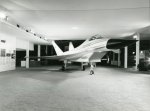France has a bigger arms export market share than Germany.Yes but they should be happy that they can hopp on the arms export train of Germany. They (Dassault) fear about their middle eastern customers, just as BAE/UK now fears for less work. On the other side, Germany is making a U turn and now procures T3B as it seems, to replace T1s, while it surely will get at least some part of the Tornado replacement too. So Germany alone creates more work than the Saudis are negotiating for.
France must wake up and understand, that the future lies in orders for the EU/Europe and NATO partners.
P.S. Do you really believe that Israel/US would allow the sale of NGF/Tempest to Saudi Arabia / UAE?
Maybe we won't supply parts for those German planes either.
If China is offering the J-31 then there's no choice.
Last edited:







